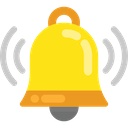To maximize the quality of your results and reduce the amount of buffing needed, use abrasives specifically designed for paint finishing.
All whateverthousand grit paper is <span style="font-style: italic">not</span> created equal. Abrasive grading is based on <span style="font-style: italic">average</span> grit. This means that a paper graded as P2000 can have some percentage of particles that are bigger, P1500, P1200, etc. So the scratch pattern it produces will have some percentage of deeper gouges than if they were all the same size.
When you buff, you need to remove paint down to the bottom of the <span style="font-style: italic">deepest</span> scratches to get a clear finish. So if your abrasives are more consistent you don’t have to cut as deeply with your compounding. You’ll get better results with less work and less overall paint removed.
Abrasives like Meguiar’s Unigrit papers, Micro-Mesh, Mirka’s Abalon pads and 3M’s Trizact disks have extremely uniform grit sizing and distribution. They’ll produce much better results with less effort than standard abrasives.
I agree that sanding and buffing paint is both an art and a skill. Doing it well requires practice and experience. Don’t expect it to go perfectly your first time out. Don’t be surprised if you ruin and need to re-do panels before you get the hang of it.
Here’s the absolute best “how to” series on the subject on Youtube. (Note that the instructor, Mike, issues repeated warnings that watching the demonstration won’t make you proficient. It takes practice.)
The products used are obviously from one particular manufacturer's range but the techniques and principles apply to anybody's products.
<span style="font-weight: bold">
Wetsanding part 1 of 5</span>
<span style="font-weight: bold">
Wetsanding part 2 of 5</span>
<span style="font-weight: bold">
Wetsanding part 3 of 5</span>
<span style="font-weight: bold">
Wetsanding part 4 of 5</span>
<span style="font-weight: bold">
Wetsanding part 5 of 5</span>
pc.

 Hi Guest!
Hi Guest!
 smilie in place of the real @
smilie in place of the real @
 Pretty Please - add it to our Events forum(s) and add to the calendar! >>
Pretty Please - add it to our Events forum(s) and add to the calendar! >> 



